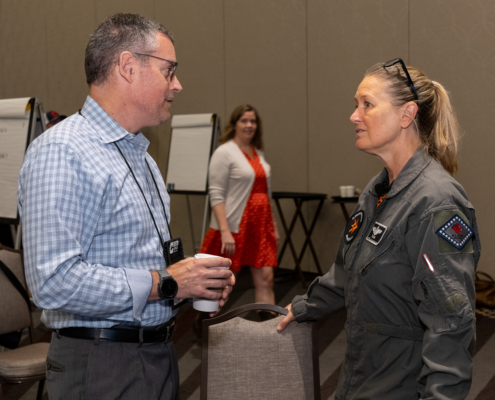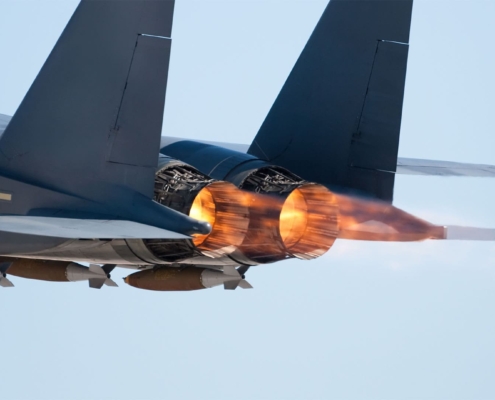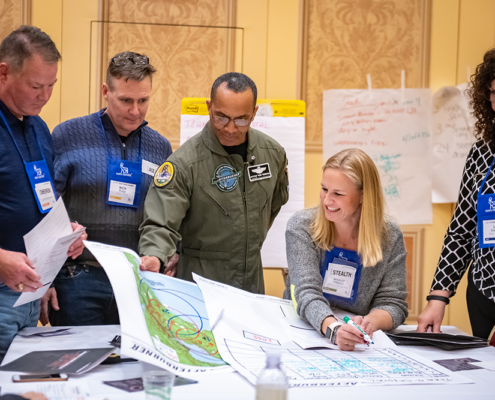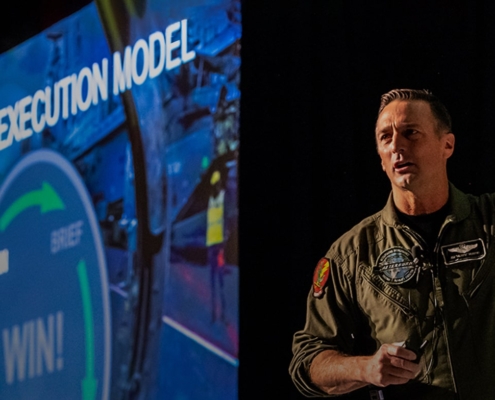 https://www.afterburner.com/wp-content/uploads/2024/11/High-Impact-Leader-Crete2024Summit-677-scaled.jpg
1707
2560
Ansley Anchors
/wp-content/uploads/2024/07/Afterburner-Logo-Resize-Fullcolor-300x93.png
Ansley Anchors2024-11-05 10:52:592024-11-21 14:56:37The Top 5 Attributes of a High-Impact Leader
https://www.afterburner.com/wp-content/uploads/2024/11/High-Impact-Leader-Crete2024Summit-677-scaled.jpg
1707
2560
Ansley Anchors
/wp-content/uploads/2024/07/Afterburner-Logo-Resize-Fullcolor-300x93.png
Ansley Anchors2024-11-05 10:52:592024-11-21 14:56:37The Top 5 Attributes of a High-Impact Leader
Is Collaboration One of Your Team Building Strategies?
Do you know how to collaborate in a disciplined fashion? It’s a great question, isn’t it? The current business and leadership literature touts the importance of collaborating in our turbulent world. Businesses and teams large and small are struggling to wrap their heads around just what disciplined collaboration is. Many see collaboration as a challenge that can be met through technology, whether it’s through social media or virtual conferencing. The answer is that it’s one of the most effective team building strategies you can practice.
Others recognize the benefits of restructuring office space itself to be more open. But technology and physical space are only superficial means to address the challenge of collaboration. Collaboration is not about where or through what media people interact. Instead, it’s about how people interact. And, that how must be disciplined. Disciplined collaboration holds a central place in Jim Collins’ latest work, “Great by Choice.”
The book is the result of a grand research project that seeks to discover why very few companies thrive in spite of uncertainty, chaos, and luck – good or bad. It’s a centrally important issue in our turbulent world where change is so rapid and unpredictable.
Disciplined collaboration has been cited as a centrally important skill for teams and companies to constantly create, innovate, and adapt to change. Innovation is often seen as the fruit of collaboration. But, this is a dangerously limited perspective. Collaboration is much more valuable than just a means to achieve innovation. Disciplined collaboration is an invaluable team-building strategy that allows teams to innovate, solve problems, make decisions, plan, and execute.
Above all, disciplined collaboration is a creative planning and decision-making process. In “Great By Choice,” Collins defines discipline as consistency of action. For teams and companies, Collins’ definition implies that collaboration processes should be consistent.
“The great task, rarely achieved,” Collins writes, “is to blend creative intensity with relentless discipline so as to amplify the creativity rather than destroy it.” He goes on to point out that “the signature of mediocrity is not an unwillingness to change; the signature of mediocrity is chronic inconsistency.” That inconsistency begins in the planning and decision-making process. And, in a world of complex challenges that are best met by teams rather than individuals, that consistency requires a disciplined collaborative process — or a strategy for team building.
Successful Teams Focus on Their Collaboration Skills
A disciplined, collaborative, planning process requires certain elements. Altogether, there are many elements in a planning process. However, a few of the elements that are most important to effective collaboration are that the process is dynamic, iterative, participatory, and cognitively diverse.
Dynamic means that the ability of the planning processes product, the plan, be adaptable. Change happens. So, don’t create a plan collaboratively only to find that the plan needs to change without a clear process of making those adaptations.
A disciplined collaborative process should also be iterative. Iteration is similar to dynamism, but not the same. Iteration is the plan improvement process within the overall planning process. Dynamism refers to the adaptation of the plan after it has begun to be executed. Iteration occurs during planning. Dynamic adaptation occurs during the execution of the plan. Those who collaborate during planning, and iterate the plan before its execution will be able to execute and adapt those plans more effectively and end up being much more successful teams.
Good Team Building Training Means Better Collaboration
Of course, collaboration requires participation by more than one individual. That is what makes good team collaboration so challenging, and proper team building training so important. How does a group of people come together to produce a plan or make a decision? Fundamentally, it requires a process for generating ideas at the individual or very small group (2-5 persons) level, then combining and vetting them at a larger group level (5-15 people). This is called nominal group aggregation.
Normal group aggregation is a delicate process because everyone has their own ideas – some better than others. In collaborative groups, some people push their ideas forcefully while others hold back on valuable insight fearing they won’t be heard or appreciated. But, good collaborative techniques can overcome such obstacles. And, those techniques must be part of a disciplined collaborative process. Disciplined collaboration is not about achieving consensus. Instead, it is about producing the best plan to achieve the objective. Consensus can lead in any direction, while disciplined collaboration yields a plan that leads in the right direction.
Finding that right direction requires another element – cognitive diversity. It does us no good to collaborate with a team of individuals that think alike, has similar backgrounds and experience, occupies the same hierarchical positions, and so forth. Creativity and innovation require divergent thinking and dialogue.
Disciplined collaboration must adhere to a process that harnesses cognitive diversity. Be disciplined in incorporating the right mix of experience, knowledge, and position, in the collaborative process. Consider that two heads are not much more valuable than one if both heads think about and see the world in the same way. To a hammer, everything looks like a nail. Make sure you have a complete toolbox when planning collaboratively.
There is one additional important element: the process must be simple. To collaborate effectively and efficiently, people need a simple process. If a team has to spend time organizing and training about how they are going to collaborate and then struggle to become proficient at that process, then efficiency and effectiveness suffer.
Use a process that is simple to learn and apply – then use that process consistently throughout the organization. Disciplined collaboration will become a widely practiced behavior, and that behavior will ultimately become a healthy collaborative culture and create more successful teams.
Disciplined collaboration yields more than a plan or decision. It’s one of those team building strategies that engages the team to execute successfully. Disciplined collaboration is the first step in owning success as a team. Humans like to be autonomous; to have the freedom to solve problems and perform tasks on their own and in their own way. But our complex, turbulent world requires collaboration in order to create, innovate, and succeed.
a larger whole. Disciplined collaboration is the key to satisfying these often conflicting needs in modern organizations. On one hand, collaboration gives each individual the opportunity to contribute their own insights and then, once a final plan is created, to go forth and execute in their own semi-autonomous way. On the other, what each individual executes becomes a well-coordinated part of the overall objective. But, to fulfill these basic human needs, the team must achieve collaboration through a disciplined process.
Disciplined Collaboration is our expertise, talk to one of our professionals today to craft a program around your needs.
Click here to read the full article: [download id=”3276″]
Will Duke is Afterburner’s Director of Learning and Development. His duties include coordination of the development of intellectual property, training programs, and educational materials. He also serves as a consultant to process and continuous improvement management programs. With Co-author James “Murph” Murphy, he wrote the 2010 release “The Flawless Execution Field Manual. Duke currently serves as a senior Human Resources Officer in the in the U.S. Navy Reserve and has held numerous command and positions throughout his career.
Share This Post
More Like This
 https://www.afterburner.com/wp-content/uploads/2024/11/High-Impact-Leader-Crete2024Summit-677-scaled.jpg
1707
2560
Ansley Anchors
/wp-content/uploads/2024/07/Afterburner-Logo-Resize-Fullcolor-300x93.png
Ansley Anchors2024-11-05 10:52:592024-11-21 14:56:37The Top 5 Attributes of a High-Impact Leader
https://www.afterburner.com/wp-content/uploads/2024/11/High-Impact-Leader-Crete2024Summit-677-scaled.jpg
1707
2560
Ansley Anchors
/wp-content/uploads/2024/07/Afterburner-Logo-Resize-Fullcolor-300x93.png
Ansley Anchors2024-11-05 10:52:592024-11-21 14:56:37The Top 5 Attributes of a High-Impact Leader https://www.afterburner.com/wp-content/uploads/2024/09/fighter-jet-performing-quick-ariel-maneuver.jpeg
1280
1920
Nate Riggins
/wp-content/uploads/2024/07/Afterburner-Logo-Resize-Fullcolor-300x93.png
Nate Riggins2024-01-02 19:53:032024-11-21 14:56:394 Ways to Boost Your Team’s Morale and Hit Your Revenue Targets
https://www.afterburner.com/wp-content/uploads/2024/09/fighter-jet-performing-quick-ariel-maneuver.jpeg
1280
1920
Nate Riggins
/wp-content/uploads/2024/07/Afterburner-Logo-Resize-Fullcolor-300x93.png
Nate Riggins2024-01-02 19:53:032024-11-21 14:56:394 Ways to Boost Your Team’s Morale and Hit Your Revenue Targets https://www.afterburner.com/wp-content/uploads/2024/09/Group_Meeting_2-1.jpeg
1707
2560
Nate Riggins
/wp-content/uploads/2024/07/Afterburner-Logo-Resize-Fullcolor-300x93.png
Nate Riggins2024-01-02 18:26:092024-11-21 14:56:39Fueling Business Agility: The Strategic Pivot
https://www.afterburner.com/wp-content/uploads/2024/09/Group_Meeting_2-1.jpeg
1707
2560
Nate Riggins
/wp-content/uploads/2024/07/Afterburner-Logo-Resize-Fullcolor-300x93.png
Nate Riggins2024-01-02 18:26:092024-11-21 14:56:39Fueling Business Agility: The Strategic Pivot https://www.afterburner.com/wp-content/uploads/2024/09/airborn-fighter-jet-using-afterburners-1.jpeg
1080
1920
Nate Riggins
/wp-content/uploads/2024/07/Afterburner-Logo-Resize-Fullcolor-300x93.png
Nate Riggins2024-01-02 18:19:252024-11-21 14:56:40Combat Distractions and Boost Your Revenue – Fighter Pilot-Style
https://www.afterburner.com/wp-content/uploads/2024/09/airborn-fighter-jet-using-afterburners-1.jpeg
1080
1920
Nate Riggins
/wp-content/uploads/2024/07/Afterburner-Logo-Resize-Fullcolor-300x93.png
Nate Riggins2024-01-02 18:19:252024-11-21 14:56:40Combat Distractions and Boost Your Revenue – Fighter Pilot-Style https://www.afterburner.com/wp-content/uploads/2024/09/jamie-street-_94HLr_QXo8-unsplash-1.jpeg
1380
2048
Nate Riggins
/wp-content/uploads/2024/07/Afterburner-Logo-Resize-Fullcolor-300x93.png
Nate Riggins2024-01-02 15:02:302024-11-21 14:56:403 Steps New Leaders Must Include in Their Strategic Planning Process
https://www.afterburner.com/wp-content/uploads/2024/09/jamie-street-_94HLr_QXo8-unsplash-1.jpeg
1380
2048
Nate Riggins
/wp-content/uploads/2024/07/Afterburner-Logo-Resize-Fullcolor-300x93.png
Nate Riggins2024-01-02 15:02:302024-11-21 14:56:403 Steps New Leaders Must Include in Their Strategic Planning Process https://www.afterburner.com/wp-content/uploads/2024/09/team-looking-at-map-to-focus-on-improving-teamwork-in-the-workplace-1.png
667
1000
Nate Riggins
/wp-content/uploads/2024/07/Afterburner-Logo-Resize-Fullcolor-300x93.png
Nate Riggins2024-01-02 03:00:272024-11-21 14:56:404 Tips for Improving Teamwork in the Workplace
https://www.afterburner.com/wp-content/uploads/2024/09/team-looking-at-map-to-focus-on-improving-teamwork-in-the-workplace-1.png
667
1000
Nate Riggins
/wp-content/uploads/2024/07/Afterburner-Logo-Resize-Fullcolor-300x93.png
Nate Riggins2024-01-02 03:00:272024-11-21 14:56:404 Tips for Improving Teamwork in the Workplace https://www.afterburner.com/wp-content/uploads/2024/09/planning-1.jpeg
933
1400
Nate Riggins
/wp-content/uploads/2024/07/Afterburner-Logo-Resize-Fullcolor-300x93.png
Nate Riggins2023-05-02 20:23:162024-11-21 14:56:45Using Brain Chemistry For Building High-Performance Teams
https://www.afterburner.com/wp-content/uploads/2024/09/planning-1.jpeg
933
1400
Nate Riggins
/wp-content/uploads/2024/07/Afterburner-Logo-Resize-Fullcolor-300x93.png
Nate Riggins2023-05-02 20:23:162024-11-21 14:56:45Using Brain Chemistry For Building High-Performance Teams https://www.afterburner.com/wp-content/uploads/2024/09/afterburner-banner-image-ceo-jim-murphy-giving-a-presentation_crop-1.jpeg
784
1920
Nate Riggins
/wp-content/uploads/2024/07/Afterburner-Logo-Resize-Fullcolor-300x93.png
Nate Riggins2022-11-14 21:30:142024-11-21 14:56:45What If Your Teams Were Truly High Performing?
https://www.afterburner.com/wp-content/uploads/2024/09/afterburner-banner-image-ceo-jim-murphy-giving-a-presentation_crop-1.jpeg
784
1920
Nate Riggins
/wp-content/uploads/2024/07/Afterburner-Logo-Resize-Fullcolor-300x93.png
Nate Riggins2022-11-14 21:30:142024-11-21 14:56:45What If Your Teams Were Truly High Performing?
Top Three Threats to Employee Morale in Today’s Economy
Business Culture, Leadership, Motivation, Team BuildingAbout Us
Building Strong Teams Through the Guidance of Fighter Pilot Keynote Speakers.

